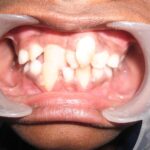As previously discussed on POTS the symptoms and causes, today we will be discussing the treatment of POTS.
Unfortunately, there’s no cure for POTS. Instead, healthcare providers use several strategies to manage the symptoms of POTS. Treatment is highly individualized based on your symptoms and what works best for you.
Exercise and physical activity: Although most people with POTS have healthy hearts, your provider may recommend a cardiac rehab program. This exercise template uses the cardiac rehab model to recondition and help improve health and manage POTS.
Nutrition and Diet: Eating a large meal can make symptoms of POTS worse, as your body redirects a lot of blood to aid in the digestion process. Because of this, providers often recommend eating several smaller meals throughout the day instead of two or three large ones according to a research gotten from an article from Cleveland clinic published on 9th September 2022
Communication: POTS can make simple activities a bit harder, and that can be frustrating and stressful. A support group or therapist may help you manage the emotional issues the condition can cause.
Compression stockings: These help push the blood up from your legs to your heart. You’ll want ones that provide at least 30 to 40 minutes of compression and go all the way up to your waist, or at least up to your thighs. Your doctor can prescribe a pair as stated in a research on WebMD published on 28th August 2022.
In conclusion POTS can usually be treated by your primary care physician. More severe cases may need to be treated in part by a specialist, including a neurologist or cardiologist. Again it is important to always check with your healthcare provider.



